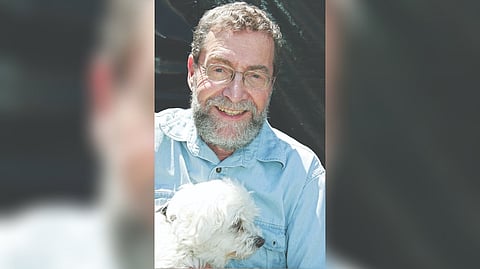

By CLAY RISEN
NEW YORK: Lenny Lipton, who as a college freshman wrote the lyrics to the classic folk tune “Puff the Magic Dragon,” and then used the song’s bountiful royalties to fund years of pioneering research in 3-D filmmaking, died in Los Angeles. He was 82.
His wife, Julia Lipton, said the cause was brain cancer. Few people leave much of a mark on popular culture; Lipton was among the few who got to leave two, and in such wildly divergent corners as folk music and cinema technology.
He was a 19-year-old student at Cornell when he sat down at the typewriter of his friend and fellow physics major Peter Yarrow. He had just read a 1936 poem by Ogden Nash titled “The Tale of Custard the Dragon” and felt inspired to write his own.
Some time later, Yarrow found the poem, still in his typewriter, and felt a similar inspiration. He put the poem to music, and in 1963 he and his folk trio, Peter, Paul and Mary, released it as “Puff the Magic Dragon.” It begins: “Puff the magic dragon lived by the sea / And frolicked in the autumn mist in a land called Honah Lee.”
Yarrow tracked down Lipton, who was working as a journalist in Manhattan, and gave him credit as a co-writer. (As Lipton told reporters repeatedly, despite persistent rumors, “Puff” had nothing to do with marijuana.)
The song was such an immediate and lasting hit — Lipton called it his “MacArthur ‘genius’ grant” — that it allowed him to leave his job and move to California.
In the Bay Area, he fell in with a circle of independent filmmakers and made several short films of his own. He received even more royalty income from his book “Independent Filmmaking” (1972), which became a niche but durable success, giving him enough of a financial cushion to explore yet another abiding interest: stereoscopy, the technical name for 3-D technology.
Lipton had fallen for it as a boy in early 1950s Brooklyn when the first wave of 3-D films arrived in theaters. He saw them all: “House of Wax,” “Bwana Devil,” “The Maze.” And while the craze passed — the technology was crude, the projectors were hard to synchronise, the cheap eyeglasses that had to be worn to see images in 3-D were clunky — his belief that 3-D was the future of film did not, and in California he began tinkering with ideas to make that belief a reality.
“‘Puff’ gave me a lot of freedom,” he said in a 2021 interview with Moving Images, a YouTube channel.
“I didn’t have to get a job. I spent years in my little lab in Point Richmond developing my stereoscopic inventions.” Lipton accumulated some 70 patents related to 3-D technology, among them a screen that switches rapidly between left- and right-eye images, and a companion pair of eyeglasses fitted with shutters that open and close in sync with the screen.
He developed that technology, which he called CrystalEyes, in the early 1980s.
It soon found applications far beyond the movie theater: Versions were used by the military for aerial mapping, by scientists for molecular modeling, and by NASA for driving Mars rovers.
CrystalEyes and other advances devised by Lipton seeded the emergence of a new generation of stereoscopic filmmaking, used in 3-D versions of movies like “Avatar,” “Chicken Little” and “Coraline.”
Today, some 30,000 movie screens across the United States use 3-D techniques that evolved from his innovations.
Visit news.dtnext.in to explore our interactive epaper!
Download the DT Next app for more exciting features!
Click here for iOS
Click here for Android